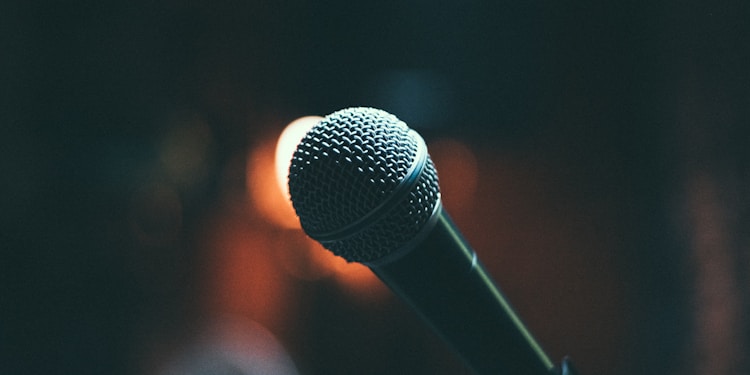Take your streams a notch higher with the best mic for online streaming. What specs to look for in a streaming mic? Check out this guide.
Streaming is one of the leading content types. Facebook, YouTube, and Twitch are some of the popular platforms for streaming content. You can stream a live event or vlog, sell products or services, demonstrate skills in a video game, or showcase achievements. Basically, you can stream any media content – whether recorded or live – to mobile devices and computers through the internet.
The live video streaming market is estimated to grow from $30.29 billion in 2016 to more than $70 billion this year. According to the State of Video Marketing report, video content remains a key priority for digital marketers. But as the Internet is flooded with streaming content, creating high-quality streams has become competitive.
Quality is a crucial factor in online streaming success. However, stream quality is more than just catchy content, excellent editing, attractive overlays, and high-quality image. Audio is a vital aspect of professional streams, and if the sound quality is poor, the viewers will not like the streams.
Many viewers don’t watch videos but only listen to streams. It is vital to invest in a streaming microphone designed to capture and record voice with clarity.
There are tons of quality microphones from different audio companies – and many are relatively inexpensive. Unlike built-in microphones for laptops, mobile phones, or webcams, streaming microphones are specifically designed for this content.
With numerous options on the market, choosing the right microphone for online streaming is not so easy? What are the key features and considerations in a streaming mic?
General Types of Microphones
In general, two types of microphones can be used for streaming, either amateur or professional levels. These are dynamic studio models and condenser microphones.
Dynamic Microphone for Streaming
Dynamic microphones use electromagnetism in capturing and converting sound waves into electrical signals. This microphone type is characterized by its reduced sensitivity, which decreases rapidly in response to loud sounds. These properties enable the mic to neutralize background noise and echoes. The dynamic microphone can be used either in a studio, open halls, or concert venues.
There are dynamic microphones with increased sensitivity and sound parameters. These microphone models offer almost the same recording quality as a condenser mic but are cheaper.
Condenser Microphone for Streaming
Microphone models like DPA Condenser Microphones use an electric condenser to capture sound. The condenser membrane can record even the slightest vibrations, thus producing better sound quality for your stream. One of its downsides is that it requires constant recharge through phantom power.
Due to its compassionate member, the condenser mic is ideally used in an enclosed, controlled environment. You need to build sound insulation to keep away noise and ambient sound. Otherwise, unwanted noise can ruin your stream.
Factors to Consider when Choosing a Mic for Streaming
When comparing microphones for streaming, there are several factors to consider:
- Sensitivity – refers to the level of sound (measured in decibels) that the microphone can pick up. Mic models with lower values can pick quiet sounds better. Choose a mic depending on the type of audio and volume you intend to record.
- Directionality – refers to which direction the mic picks up sound from. Unidirectional microphones capture sound from one direction; omnidirectional from all directions; and bidirectional from two opposite directions. The choice of microphone depends on whether you record in a studio or an open space. Typically, the unidirectional microphone is used for home use.
- Frequency response – refers to the ability of the microphone to capture the slightest and the loudest sounds without affecting quality. Ideally, you should choose one with a broader range to pick up full and distinguishable sound.
- Design features – Lavalier models are ideal for streamers, unlike conventional table microphones, not taking up space in your table. If you are recording at home, take note that some high-sensitive devices might record even the slightest sounds in your surroundings. It is best to invest in some sound-proofing technology.
- Connection method – refers to the type of connection the microphone uses. Usually, streamers use USB microphones to ensure compatibility with machines. However, if you use mixers with different interfaces, make sure your microphone uses a compatible connection method.
Some high-quality XLR microphones are great for streaming. However, these microphones do not have a preamplifier and an analog-digital converter, so you need to buy this additional equipment.











